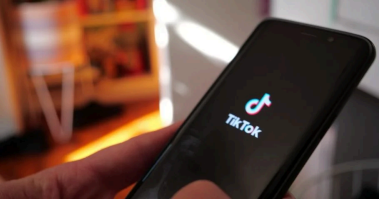By Allison Ipema

In recent times, the act of “doom scrolling” has become a popular pastime for the majority of the younger population. Doom scrolling is defined by the Merriam Webster Dictionary as spending excessive time online scrolling through news or other content. According to a Morning Consult article, 46% of millennials and 53% of Gen Z adults claimed that they doom scroll often, or at the very least, sometimes. It is extremely simple to fall into the rhythm; apps like TikTok, Instagram, YouTube, and even Snapchat promote their short videos to users, who in return scroll to see what the next video brings. Instagram and YouTube have specific sections dedicated to these videos, while TikTok’s entire premise is based around them.
In interviews with 15 DDHS students, it was revealed that, on average, 9 out of the 15 scroll social media before bed, which comes out to an average of 60%.
Doom scrolling has become so normalized as of late that no one bats an eye at it, and few people see what damage it is doing. In the long run, these apps will do more harm than good, and the effects are already beginning to show.
It has become more and more common for students to expect answers to be explicitly stated, and more often than not quickly lose interest in work when they are required to think deeply. An example of this is overhearing that students dislike the fact that there is symbolism in a book. Hearing this only proved the point further that students prefer explicit answers, rather than coming to their own conclusions. A prominent culprit for this is TikTok. It is theorized that TikTok’s short form videos have caused a decline in the longevity of attention spans in its users. Although TikTok is the easiest target when it comes to blame, it is also apps like Instagram, YouTube, and Snapchat that lessen attention spans. When students’ attention spans are reduced, they tend to struggle and be distracted from schoolwork, and they instead tend to rely on AI to do the work for them.
AI is not a reliable source, and usually, the answers it provides are in some way false. As a result, students are not developing the skills they need to succeed in the future, and are instead relying on the knowledge of a flawed robot to give them what they are searching for. Reduced attention spans as well as dependence on tools like AI and Tiktok’s short form videos can lead to time management issue, as well as easy distractions. There is a specific genre of TikToks, most commonly referred to as educational TikToks, that attempt to educate the viewer on a topic in a short amount of time. This deters people from doing their own research and looking deeper into it, which causes widespread misinformation. According to a study by the University of Chicago, 44% of TikTok videos concerning medical information were non-factual. When people engage with this type of content, whether it be medical or something else entirely, the algorithm presents them with videos of the same kind. This leads to a chain of misinformation that is constantly being fed to those who are given it. Moreover, when people are presented with a video that claims to be entirely factual, more often than not, they will take the information as gospel, and they will not check the veracity of it.
On January 18, 2025, TikTok was banned in the United States. Immediately, users were disappointed and even distraught about this, which in itself is extremely concerning. The reaction shows just how reliant people have become on the app to provide them with the entertainment they seek. This ban was meant to be a permanent action, but about fourteen hours later, it was lifted, and users were able to use it again. Naturally, people were ecstatic to see its return. “Brain rot” is a term that is defined by Oxford University as the supposed deterioration of a person’s mental or intellectual state, especially viewed as the result of overconsumption of material (now particularly online content) considered to be trivial or unchallenging.
Brainrot terms and videos have become an increasingly popular trend, especially on TikTok and Instagram, and the ban would have cut back on the spread of it, especially because of how influential TikTok is to its users. The ban would have been positive. It could potentially have led to an increase in the critical thinking skills and attention spans that have been lost. Recently, it has become a trend to shorten already short words or phrases, such as “for real.” Of course, words like “you” and “are” are notorious for being shortened within texts as “u” and “r” respectively, but abbreviations are becoming more and more extreme. It is completely unnecessary and shows just how little effort people are willing to put into what they do.
As a result of TikTok and other social media apps, people, especially those in a high school setting, have fallen victim to reduced attention spans, a lack in critical thinking, and many other negative behaviors that hold them back from harnessing the skills needed for their future. If these apps continue to pump out the brain rotting content that they do, it is with no doubt that society as a whole will suffer greatly.
- El Frenzy del Homecoming a Profundidad
 By Robert Paul El viernes, octubre 10, 2025, nuestros Cometas de Delavan-Darien jugaran en contra…
By Robert Paul El viernes, octubre 10, 2025, nuestros Cometas de Delavan-Darien jugaran en contra… - Homecoming, Edicion: A brillar
 By: Abagail Kiem Es nuevamente esa época del año, Cometas: El homecoming ha llegado! Así…
By: Abagail Kiem Es nuevamente esa época del año, Cometas: El homecoming ha llegado! Así… - Homecoming Frenzy in Depth
 By Robert Paul On Friday, October 10, 2025, our Delavan-Darien Comets will play against the…
By Robert Paul On Friday, October 10, 2025, our Delavan-Darien Comets will play against the… - DDHS Senior Sunrise: A Smooth Sailing
 By Robert Paul By some planning, we, the class of 2026, agreed on Wednesday, September…
By Robert Paul By some planning, we, the class of 2026, agreed on Wednesday, September… - Joseph “JJ” Ketterhagen Jr.
 By Mia Wolfer This week’s senior spotlight features the multifaceted individual, JJ Ketterhagen.He is an…
By Mia Wolfer This week’s senior spotlight features the multifaceted individual, JJ Ketterhagen.He is an…